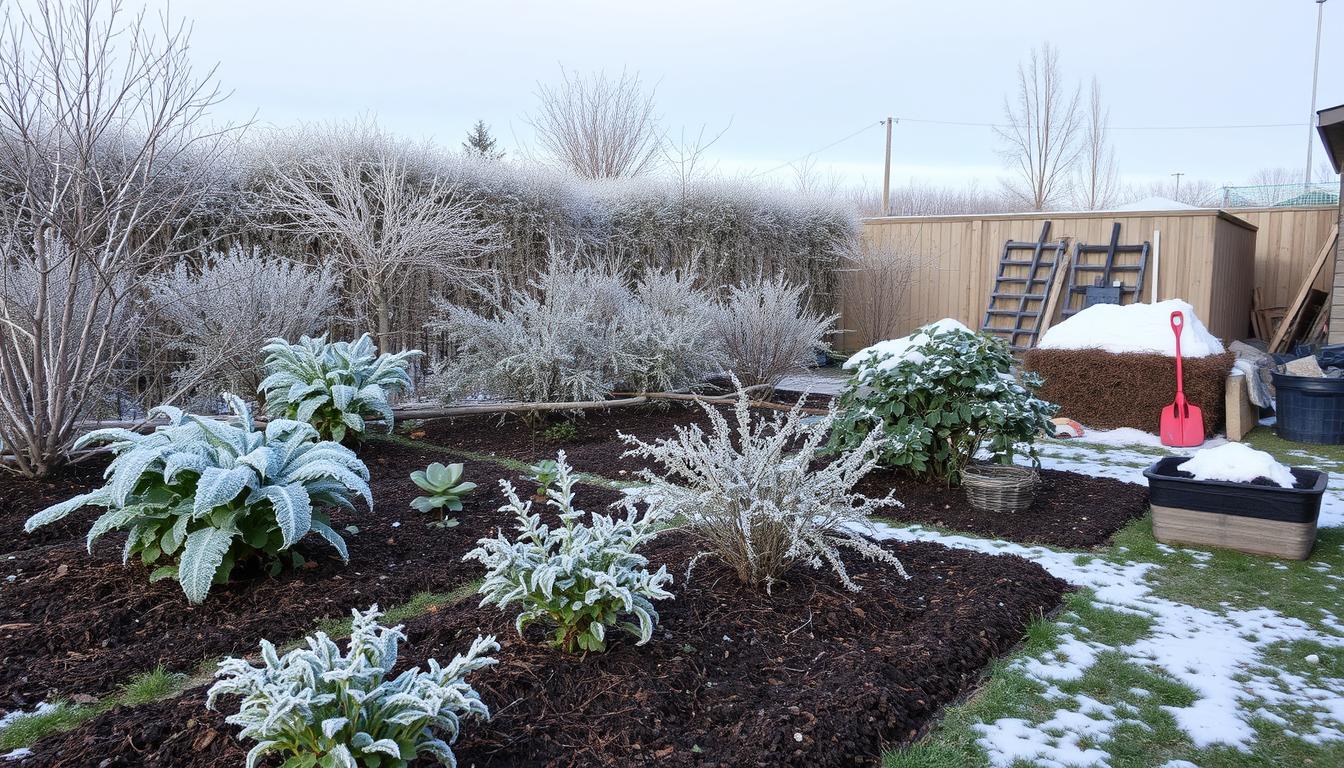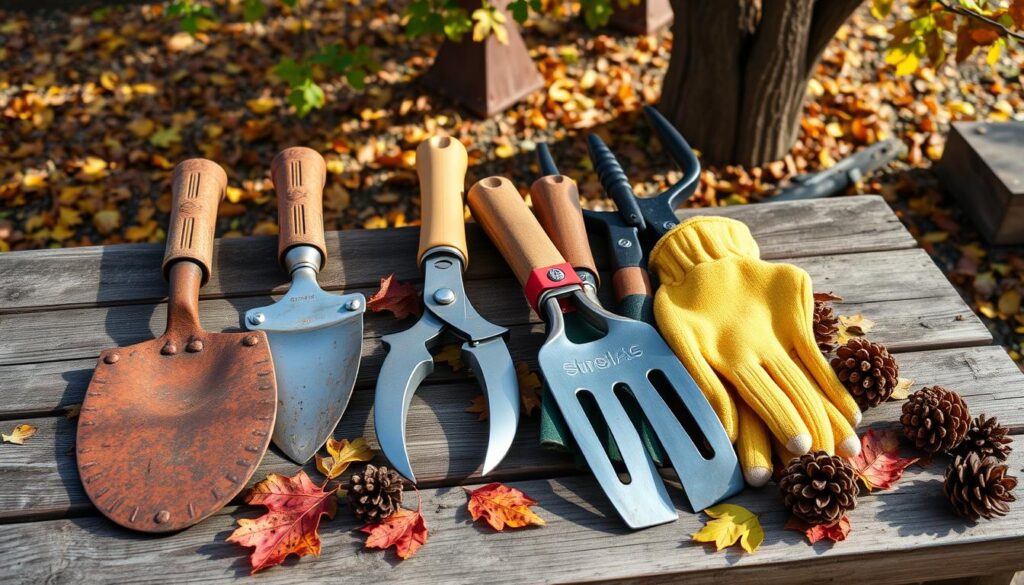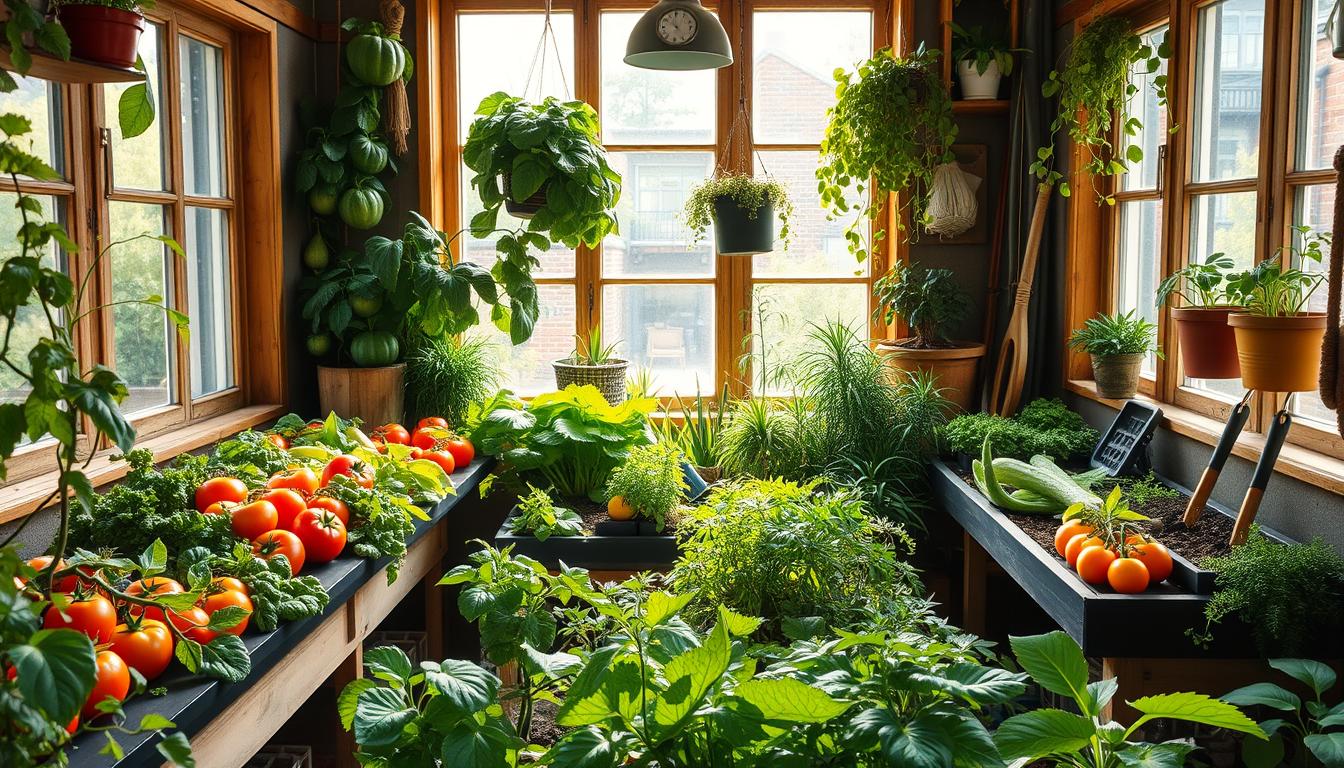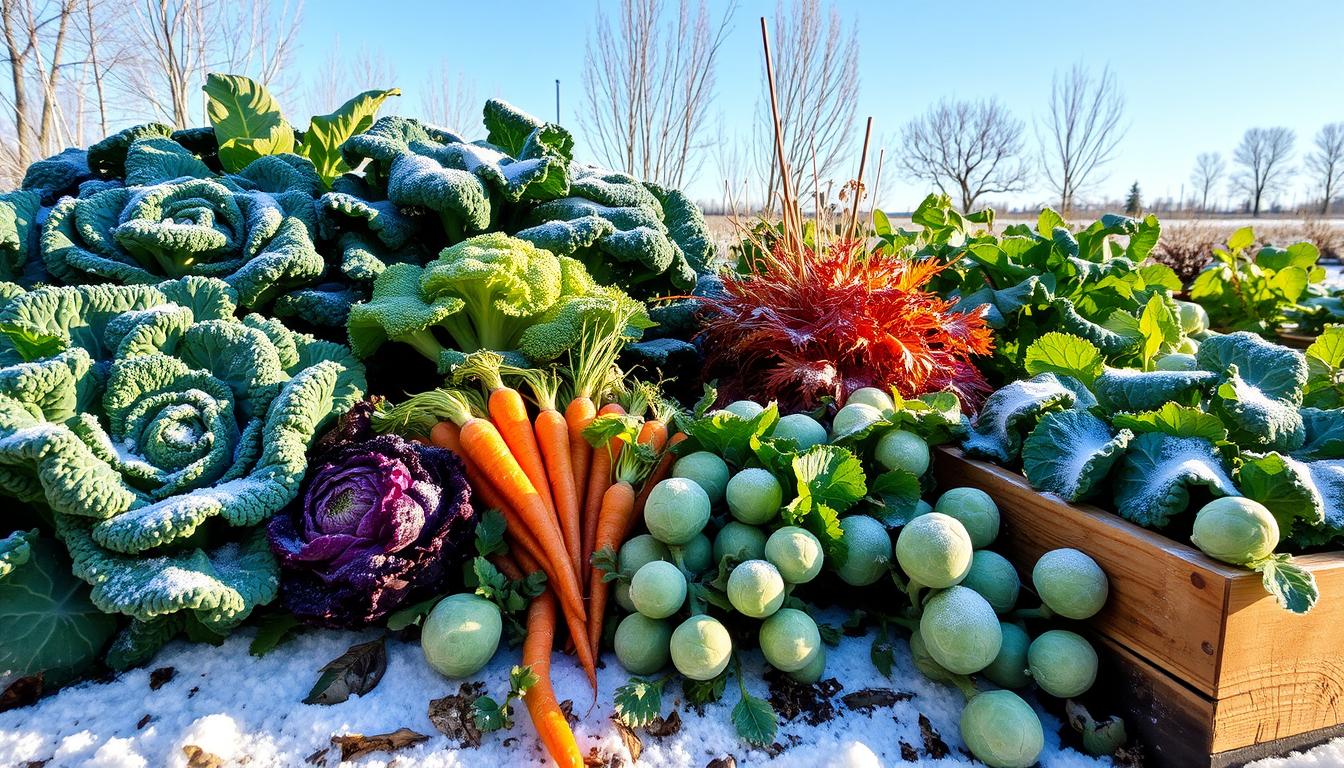
4 Essential Steps to Winterize Your Garden Like a Pro
Baby, it’s cold outside! As autumn’s colors fade, winter’s chill is coming. But your garden doesn’t have to suffer. With a few steps, you can keep your garden ready for spring. So, how do you winterize your garden like a pro? Read on to find out more.
Any affiliate links serve to maintain this blog at no extra cost to you. Parts of this post were AI assisted.
Why Preparing Your Garden for Winter is Crucial
As autumn’s cool air arrives, it’s time to focus on winterizing your garden. The winter months may seem quiet, but it’s vital to prepare for your plants’ health. This ensures they stay strong and ready for spring.
Understanding Winter’s Impact on Plant Health
Winter’s cold, snow, and winds can harm your garden. Without care, plants may face frost damage, disease, or even death. By winterizing, you protect your garden and help your plants thrive come spring.
Benefits of Proper Garden Winterization
- Prevents disease and pest infestations
- Enhances spring growth and vigor
- Protects sensitive plants from freeze damage
- Retains soil nutrients and moisture
- Reduces the risk of plant loss or damage
Timing Your Winter Preparations
Start your winter garden prep in mid-to-late October. This lets you clear debris, insulate plants, and apply mulch before the first frost. By being proactive, your garden will be ready to face winter and bloom in the spring.
“Proper winterization is the key to a thriving garden come spring. The time you invest now will pay dividends in the months ahead.”
1. Clean and Clear Your Garden Space
Winter is coming, and it’s time to get your garden ready. Cleaning your garden is the first step to a beautiful spring. Let’s explore how to make your garden spotless and inviting.
Removing Debris and Dead Plants
Start by getting rid of dead leaves and plants. One of the most efficient clearing tools is a good old rake that you can shop for here. This makes your garden look better and keeps pests away. Make sure to remove every last piece of plant material.
Tackling Weed Overgrowth
Weeds can be tough to get rid of, even in cold weather. Pull out weeds carefully, making sure to remove the roots. This stops weeds from coming back in the spring.
Preparing for a Healthy Spring
By cleaning up your garden, you’re making it ready for spring. This important winter garden maintenance task makes your garden look good and keeps plants healthy. With your garden clean, you can start the next steps in preparing for winter.
“A well-maintained garden is a canvas for nature’s beauty to bloom.”

The effort you put in now will make your garden bloom when it’s warmer. So, let’s get started and make your garden shine!
2. Winterize Your Garden Tools and Equipment
As the gardening season ends, it’s key to keep your tools and equipment in good shape. This way, they’ll be ready for the next growing season. Proper garden tool maintenance and winter storage for garden equipment can make your tools last longer. It also saves you money by avoiding the need to buy new ones.
Cleaning and Disinfecting Tools
Start by cleaning your garden tools well. Use a stiff-bristled brush and warm, soapy water to remove dirt and rust. Then, rinse and dry them to stop corrosion.
To disinfect, you can use a bleach solution. Mix one part bleach with nine parts water. This kills bacteria and fungi that could harm your plants next year.
Proper Storage Techniques
- Keep metal tools in a dry, well-ventilated spot to avoid rust. Coat them with oil or silicone spray before storing.
- Clean and treat wooden handles with a wood preservative or linseed oil to keep them in good shape.
- Store tools in a way that prevents damage or injury. Don’t just throw them in a shed or garage.
Equipment Maintenance Checklist
- Clean and sharpen all bladed tools, like pruners, shears, and shovels.
- Drain fuel from gas-powered tools, such as lawn mowers and tillers.
- Lubricate moving parts on tools and equipment as the maker suggests.
- Check cords, belts, and other parts on electric tools. Replace them if needed.
- Store all tools and equipment in a dry, safe place to avoid weather damage.
By following these steps for garden tool maintenance and winter storage for garden equipment, your tools and machinery will be ready for the next growing season.

3. Protect Perennials and Sensitive Plants
As winter comes, we must protect our perennial plants and sensitive plants. Winter plant protection and perennial care in winter are key for gardeners. They help plants survive the cold months.
Mulch is a great way to protect perennials. Use organic mulch like shredded bark, leaves, or straw around plants. It keeps roots warm and moist, stopping damage from freezing and thawing.
Some plants need extra care, like covering with burlap or garden fabric. This protects them from wind, snow, and frost. It’s important to know which plants need this extra help to stay alive.
By winterizing your garden and caring for perennials, they’ll be healthy in the spring. This way, your plants will be ready to grow and thrive.
“Preparation is the key to a successful garden in the winter months. Protecting your perennials and sensitive plants now will pay dividends when they burst back to life in the spring.”

Acting early is crucial for winter plant protection. By shielding your perennials and sensitive plants, they can make it through winter. Then, they’ll grow strong and vibrant in the warmer seasons.
4. Prepare Your Soil and Mulch
As winter gets closer, it’s key to get your garden’s soil ready. The right soil prep and mulch can protect plants, keep moisture in, and prepare for a bright spring.
Choosing the Right Mulch Materials
Not all mulches are the same for winter. Choose organic ones like wood chips, shredded bark, or leaf litter. They insulate the soil and make it richer. Stay away from rocks or gravel, as they pull heat from the soil.
Proper Mulching Depths and Methods
The mulch layer’s depth is important. Go for 2-4 inches around plants, but don’t touch stems or trunks. This stops weeds, keeps moisture, and shields roots from winter’s cold.
Soil Testing and Amendment Tips
Test your soil before it freezes to find nutrient gaps. Use compost or manure to fix this. This simple action boosts your garden’s health and energy.
To Sum it All Up….
In conclusion, winterizing your garden is a vital part of responsible gardening practice. It not only safeguards your investment but also sets the stage for future growth and resilience. Embrace the changing seasons as an opportunity to reflect on your gardening journey and prepare for the beauty that spring will bring. With thoughtful preparation, your garden will awaken rejuvenated, ready to showcase the fruits of your labor once more.






-
-
6 months
Tagged Bringing Plants Indoors, Houseplant Winter Care, Indoor Plant Maintenance, Winter plant care, Winter Plant Survival